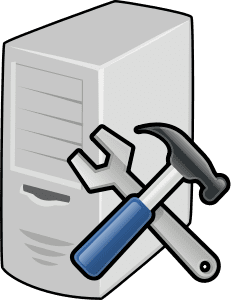Are you ready to get started with data modeling, but wondering what software tools you’ll need? Have you seen some of the more complicated-looking models and wonder how you can create these with your business analysis tool set?
In this article, we’ll discuss the types of tools used to generate different types of data models, and then specifically look at how you can use tools you are most likely familiar with to do data modeling.
(By the way, if you are looking to learn more about data modeling, be sure to check out our Free Data Modeling Training.)
Database Tools Can Generate Complicated-Looking Models
Most database models we see are physical-level models representing the actual database structure. The good news is that no one is manually creating these models. Most often, they are generated output direct from the database software itself.
This also happens to be one reason they are so difficult to read from a business perspective. These models do not represent meaningful abstractions designed to help business stakeholders make decisions about data requirements. They simply show us what exists today, in all its wonderful and gory detail.
(Luckily, as a business analyst, you won’t be creating these models, although you may need to review them to understand the current state. If you haven’t already checked out this article on how to data model without getting too technical, be sure to do so. We define the difference between physical, logical, and conceptual data modeling there and draw a line in the sand regarding what type of data modeling is typically done by business analysts.)
Business Analysts Use Tools Like Visio and Excel
When we are updating existing data models or communicating the requirements for creating new database designs, we don’t have automated tools to generate these specifications. So, yes, we do need to create the models from scratch…manually.
Here are 3 tools commonly used by business analysts to complete conceptual and logical data modeling.
- For creating ERDs, Visio is a common choice. It’s a full-featured software tool that many organizations already have. (Microsoft also offers a 60-day full-featured free trial of Visio, making it easy to practice using it even if your organization doesn’t have a license.)
- Alternatively, if you don’t have access to Visio, there are many web-based diagramming tools offering similar functionality to Visio. Gliffy is my favorite because it’s simple and easy to use. You can also create and save up to 5 diagrams for free.
- For a data dictionary or data mapping, Microsoft Excel is a common choice. Sometimes Excel can get a little messy and so it might be better to bring your matrix over into a Microsoft Word table, which will make it easier to add more formatting and narrative.
(In the Data Modeling for Business Analysts course, we’ve included templates and samples in these formats so you’ll be able to get started right away.)
More Sophisticated Modeling Tools Can Generate Code
When it comes to software tools and data modeling, there is one more practice you should be aware of. There are a collection of visual modeling tools that can be used to automatically generate code or databases. These are used by developers and simplify the process of programming.
If you are modeling using one of these tools, you are definitely treading outside the boundaries of a business analyst role. If you are not a developer and not responsible for designing and building database structures, you shouldn’t need to use these tools. Or, if you do use them, your models should be considered drafts for a technical design to iterate from when implementing the technical solution, not final models designed to generate code.
When in Doubt, Keep it Simple
Data modeling is complex enough without worrying about learning a lot of new software too. When in doubt, choose a piece of software that’s readily available or that you are comfortable with. Focus on communicating the data-related business requirements in the best possible way, and you’ll be achieving exactly what you need to do as a data modeling business analyst.
>>Learn More About Data Modeling
Learn the essential Data Modeling Techniques (even if you don’t know how to code) with this free training.

